#micpre
Photo

We are not sure what this does but it looks very nice. 😊 @soundgas ? 🤔 #stablemicacondenser #micpre #micpreamp #vintage #audio #mystery #mysterybox #what #whatisit #whatisthis #nodiea #noeyedeer #knob #knobs #bigknob #wood #fagburn #studio #vintagestudio #analogue #analoguestudio #audiogoldcrouchend #audiogold (at Audio Gold) https://www.instagram.com/p/CoKATRyN2-L/?igshid=NGJjMDIxMWI=
#stablemicacondenser#micpre#micpreamp#vintage#audio#mystery#mysterybox#what#whatisit#whatisthis#nodiea#noeyedeer#knob#knobs#bigknob#wood#fagburn#studio#vintagestudio#analogue#analoguestudio#audiogoldcrouchend#audiogold
3 notes
·
View notes
Photo
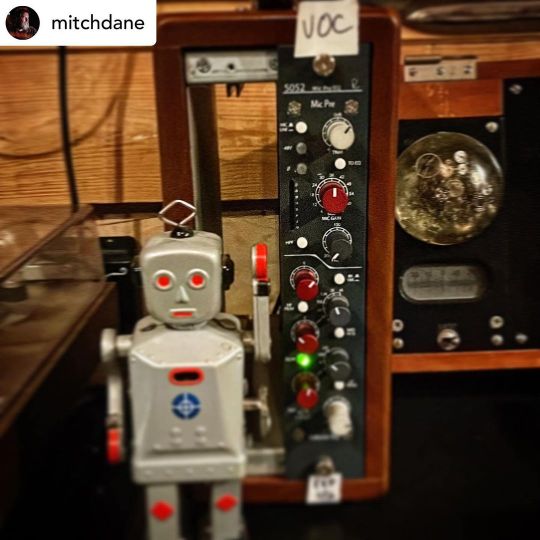
📸 @mitchdane “The @rupert_neve 5052 is the closest thing I’ve experienced to the vintage 1073s from my old console. I used this on the recent @sidewalkprophets vocals along with a vintage Neumann 269c and Neve 2254. Brilliant clarity and character. #rupertnevedesigns #sputniksound @sputniksound #micpre #studio” https://www.instagram.com/p/CjQ1YC0PZFQ/?igshid=NGJjMDIxMWI=
0 notes
Photo
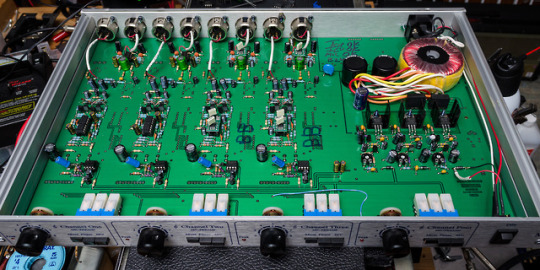
1999 Sytek MPX-4A-ii mic preamp
These got famous because Steve Albini likes them, and they were designed by the same person as some of the better-known Neotek analog consoles. They’re super quiet and clean, with a minimal feature set. The “ii” revision (of which this is a very early example) has detented pots for gain matching, power supply updates for higher current, layout revisions for lower noise, input protection diodes, opamp sockets, and DC servos to eliminate coupling caps.
This one needed some new capacitors and new opamps in channels 1-2. I went ahead and replaced all of the local decouplers in those channels, and also replaced the bipolar coupling caps between the gain block and output stage on all channels.
Some opamp notes below...
People get weird about the opamps they find in here. Most Syteks that you see around have the “Burr-Brown mod” in channels 3 & 4. All that means is that the NE5532s in the gain block and output stage are replaced with Burr-Brown (now owned by TI) OPA2134s. The 2134 is a JFET input opamp that’s quite popular in audiophile circles, probably because it’s fairly forgiving of being plopped into circuits not designed for it. You’ll also see people talking about a Sytek “JFET mod” which is the same thing... or maybe different if Sytek couldn’t source 2134s in the early 2000s and used some other FET-input opamp instead.
In reality, the 2134 has higher distortion, higher noise, and poorer drive capability in this circuit than the NE5532 it was designed around. If anyone heard a difference (which is honestly not that likely since we’re talking about differences that are ~95dB down from full scale), it’s likely it was just more distortion, not “rounded tube-like transients” or whatever the mod was supposed to produce.
Then there’s the whole “why are there TL072s in here?!?!” thing that some people do when they open one of these. The TL072s are there to drive the peak LED, that’s it. That’s their only function. No point using something fancy in those positions. Some later models have NE5532s in these slots. Doesn’t matter.
It’s actually quite difficult to improve on the performance of the NE5532 in this circuit. This particular preamp now has LM4562s in the gain block for channels 1 & 2, which reduced 3rd and 5th distortion harmonics by about 3dB versus the original 5532 (not much when those harmonics were already 95dB down). The 4562 does not like this preamp’s output stage (its noise is higher in that position), so there are still 5532s in those slots for channels 1 & 2.
To keep the “Burr Brown” thing on channels 3 & 4 but improve performance over the 2134, I used OPA1642s (FET input) and OPA1612s (bipolar input). Specifically, 1642 > 1612 in each gain block and a 1642 in each output stage produced the lowest noise and distortion. These are modern SMT opamps that have to be mounted on small adapter boards, but they do well in this circuit. They’re rail-to-rail and have higher headroom than the 2134, with even lower noise than the 5532. Channels 3-4 now have only slightly higher distortion than channels 1-2, and the increase is all 2nd harmonic -- totally unobjectionable.
So now, channels 1-2 produce the “stock” sound but with slightly reduced distortion, and channels 3-4 produce slightly more distortion but have slightly lower noise. But I seriously bet nobody could tell them apart in a blind test.
7 notes
·
View notes
Photo
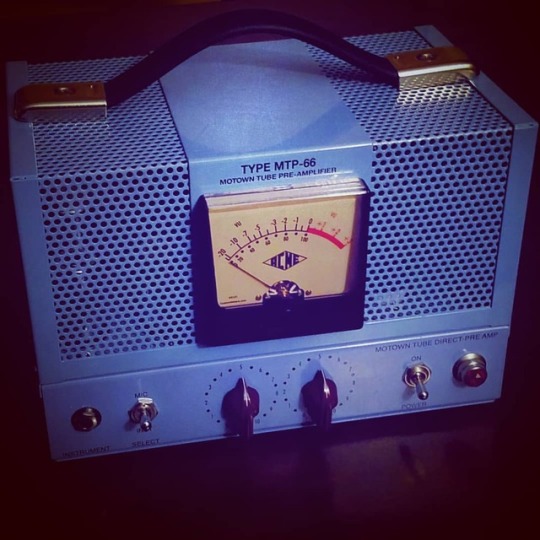
Really, truly, finally. Acme MTP-66. @reverb #recordingstudios #micpre #motown #jamerson #marvingaye #whatsgoingon #thetemptations #berrygordy #thesupremes #smokeyrobinson #detroit #recording #recordingengineer #recordingstudio #recordingsession #bassplayers #bassplayer #recordproducer #protools #keyboard #keyplayer #studio #bassguitars (at Analog Anonymous) https://www.instagram.com/p/BotAMeSFluq/?utm_source=ig_tumblr_share&igshid=bv1ktn91dm75
#recordingstudios#micpre#motown#jamerson#marvingaye#whatsgoingon#thetemptations#berrygordy#thesupremes#smokeyrobinson#detroit#recording#recordingengineer#recordingstudio#recordingsession#bassplayers#bassplayer#recordproducer#protools#keyboard#keyplayer#studio#bassguitars
1 note
·
View note
Photo
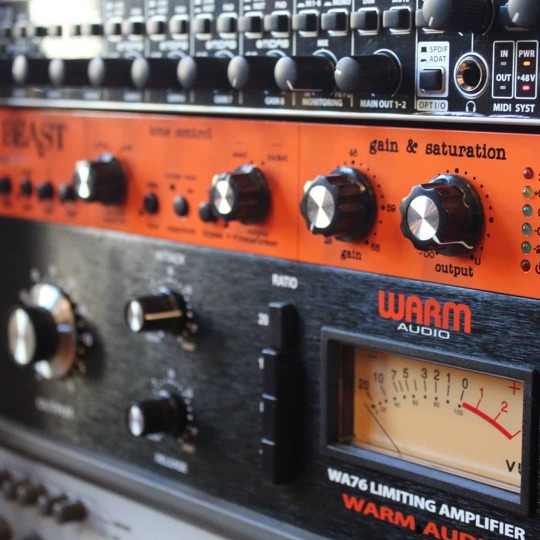
These bad boys from @warmaudio have given me enough warmth to go through this winter without having to purchase new recording gear. Maybe next year I'll have to get the #wa273eq and the #wa2a because you know the motto: Winter is coming. Or keeps coming. Or GAS. #wa76 #tb12 #tonebeast #recordinggear #homestudio #micpre #warmaudio #gas #gearaquisitionsyndrome #focal #focaltwin #recordingstudio #homestudio #recordproducer #soundesign #musicforfilm #gearporn #audiomonitors #studiomonitors #focaltwin6be #hofabasstrap # #davidsmithinstruments #prophet08 #prophetrev2 https://www.instagram.com/p/B5nPT2bldc1/?utm_medium=tumblr
#wa273eq#wa2a#wa76#tb12#tonebeast#recordinggear#homestudio#micpre#warmaudio#gas#gearaquisitionsyndrome#focal#focaltwin#recordingstudio#recordproducer#soundesign#musicforfilm#gearporn#audiomonitors#studiomonitors#focaltwin6be#hofabasstrap#davidsmithinstruments#prophet08#prophetrev2
0 notes
Text
Reset
I’ve decided to make some changes with PioneersFX during the upcoming months. Those of you who read the last blog-entry are aware that my free time has become very limited in the last months. To maintain lead times that are a) not absolutely embarrassing for myself and b) bearable for my customers I decided to downsize my product portfolio a bit.
All the other effects will still be available as custom orders, but the “normal” portfolio is going to be produced in batches. Apart from the fact that this will save some shipping costs when ordering parts, it is also less time consuming and easier to fit in my life schedule. The new batches will feature new PCB-revisions, soft-touch relais-switching and some new design-details on the outside. The process of upgrading the PCBs, building prototypes, making new pictures for the store and so on will take a few months but I think it’s the only way to keep up the quality and lead times that I expect from myself.
Meanwhile, the “Tube Mic-Pre”-project is coming along very well:

5 notes
·
View notes
Photo
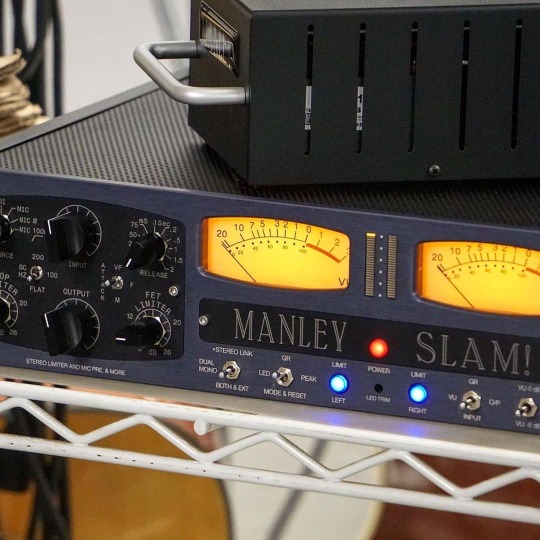
Look it up 💥💥💥💥💥💥 - #manleylabs #manley #slam #stereo #limiter #micpre #madeinamerica #tubes #audio #gear #tubesrule https://www.instagram.com/p/CGQoxD6APPI/?igshid=1falc01paqcat
0 notes
Photo
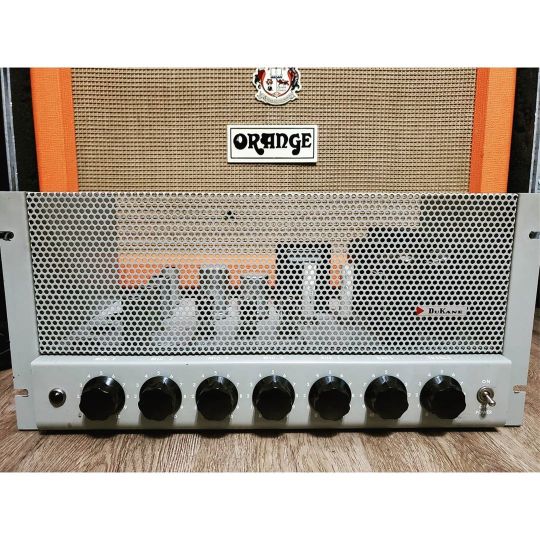
Shoutout to @nathanmakesrecords for being unbelievably rad and literally giving me this old DuKane PA head. Specifically it's a model 1E460A and has 4 mic inputs and 1 Aux input. This thing is super clean and even has the original schematic too which dates it to 1959. I have no idea what my future plans are for this thing. Do I convert it into another guitar head? Do I track down the mic transformers and use it as a PA head? Or do I somehow convert it to a 4 channel mic pre?? At least I have options! . . . . . . . #DuKane #DuKanePA #TubePA #PAHead #TubeHead #MicPre #RecordingStudio #1950s #ArtDeco #Retro #MidCenturyModern #1959 https://www.instagram.com/p/CDm1Pnkp79q/?igshid=ddhczsl25cxu
#dukane#dukanepa#tubepa#pahead#tubehead#micpre#recordingstudio#1950s#artdeco#retro#midcenturymodern#1959
0 notes
Photo

If you looking for a new Microphone preamp, this has to be on your list! The Cranborne Audio Camden 500 it's a awesome clean preamp, and on the other side it's gives you the option to color your sound with the Mojo knob. Get yours now at www.crazyrabbit.ch #crazyrabbit #crazyrabbitproaudio #studio #microphone #recording #micpre #camden500 #cranborneaudio #500 #mikrofon #mic (hier: Crazy Rabbit Pro Audio) https://www.instagram.com/p/B8GrzkAhtok/?igshid=1pru569s81q5b
#crazyrabbit#crazyrabbitproaudio#studio#microphone#recording#micpre#camden500#cranborneaudio#500#mikrofon#mic
0 notes
Photo
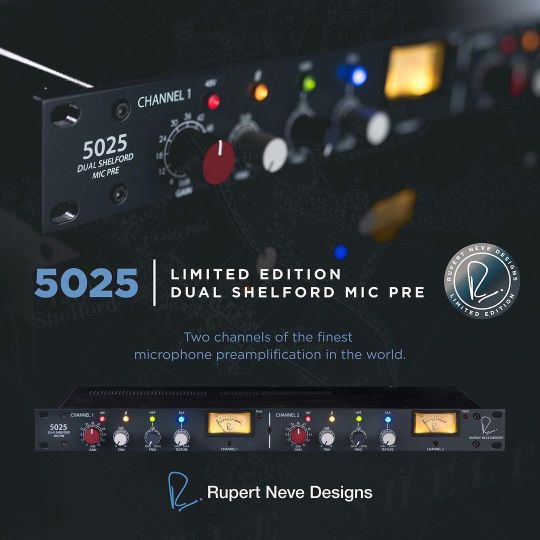
We made 300 of these, and the last few recently shipped out from our shop - so if you missed them the first time around, a few are still available from our dealers! #shelford #micpre #rupert #neve #rupertneve #rupertnevedesigns #limitededition https://www.instagram.com/p/ChqBZW2go6k/?igshid=NGJjMDIxMWI=
0 notes
Photo
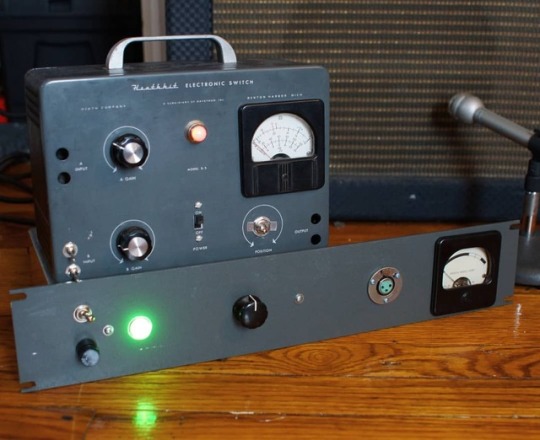
Maybe one day ill buy instead of build a #micpre ... Top: Stereo Opamp Labs preamp. First pre i built, highly recommended project for beginners. Bottom: most recent build, a tube pre Im going to call "Bendix." #handmade #diyaudio #vacuumtube #recording #hifi #sweettone (at South Bend, Indiana)
1 note
·
View note
Photo
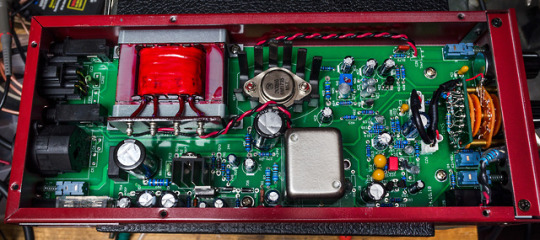
GAP Pre-73 Jr: modifications
This is a gigantic info dump in case anyone is searching for info on this mic preamp. It’s basically the cheapest Neve-style knockoff you can find, and it’s a common candidate for modification (along with its big brother the Pre-73, which comes in lots of variants).
After changing both transformers to UK Carnhills, fixing a gross factory error in the phantom power feed, changing gain stage caps to tantalums and polystyrenes, correcting the fact that the input impedance was 75% lower than specified, adding a 600-ohm load on the OT, and re-biasing the output stage....
I can’t really tell it apart from my other preamps. Fixing the input impedance means that it doesn’t roll off lows from dynamic mics like it did before, but that’s about it. In a blind test I basically could barely tell it apart from other preamps on truly repeatable sources like reamped guitar. I may write a post later about how deeply skeptical I am of mic preamps as a class of equipment -- I’ve come to seriously doubt that anyone could reliably tell most preamps apart in double-blind testing, holding all other factors constant. Working on this preamp has only reinforced that skepticism.
Here’s a tl;dr if you don’t want to read all the following: skip this preamp entirely unless you’re prepared to change out the resistors in the attenuator ladder to fix the input impedance. If you do dive in and make that change, replace the input transformer with a Carnhill 9045M while you’re at it, and change C4 to 180pf and cut out R5. Change 1R2 to 4.7k and 1R6 to 470R. Beyond that, any other changes (including the output transformer) will not likely net you anything audibly better.
Read on for details.
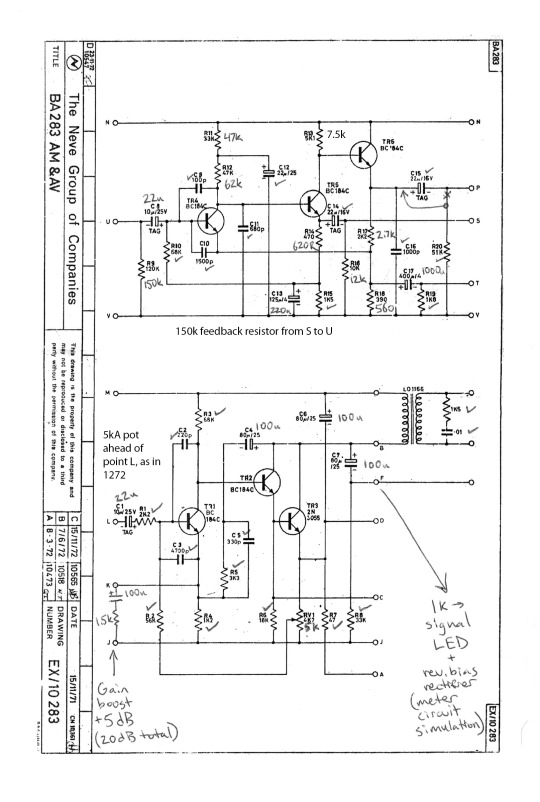
^ Schematic values of GAP Pre-73 Jr overlaid on a Neve BA283 schematic (enlarge)
Circuit
Gain range is smaller than the full-size Pre-73, because there's only one preamplifier stage, rather than two as in the Neve 1073 (the 1073/Pre-73 bypasses the first preamp stage when sensitivity is set higher than -55dB). The active portions of the 73 Jr are analogous to a single Neve BA283 card with a pot (5kA) in between the input and output amplifiers. That is, the circuit is basically a Neve 1272 line amp, including its output pot, with a limited resistor-ladder stepped attenuator added to the front. This is an extremely popular way to "clone" the 1073 on a budget, or to retrofit cheaper 1272s as mic preamps.
The 73 Jr's implementation is almost exactly like the JLM "hot rod mod" retrofit for 1272s -- it achieves extra steps of gain by using the extra switch positions to shunt position 'T' (ref. the BA283 schematic). The first two shunt positions (+45 and +50 on the 73 Jr) are similar to the 1073's -45 & -50 positions (330R & 120R shunts), but beyond that, distortion will rise as the amplifier gets closer to running open loop.
Geoff Tanner of Aurora Audio (used to work for Neve) doesn't like this arrangement because the front amp is doing too much work while the output amp doesn't do much. GAP may have taken this to heart, since they have the output amplifier gain fixed at +20dB, rather than the Neve-standard +15dB, using an R-C emitter shunt network discussed in the Neve BA283 service manual.
73 Jr’s input stage minimum gain is ~+2dB, which includes input transformer voltage gain (+6dB).
DI minimum gain is -33dB, because it uses a 100k series resistor to pad down the signal level and to create a higher input impedance. Not a great DI implementation, and it bypasses the input transformer.
Input impedance
JLM's original resistor ladder produces a 5.9k load on the input transformer secondary, very close to the 5.6k input load of the 1272. GAP uses different resistor values in the 73 Jr's ladder, which add up to 3.3k load driven directly by the input transformer. They have a 12k resistor in parallel with the 3.3k ladder load, which works out to 2.5k of total load on the secondary, not even close to the specified 4.8k. Measured input impedance (unbalanced connection) was 400 ohms! Turns out this was in part due to mis-populated phantom resistors: one phantom leg was 1k (!) while the other was 6.8k -- measurement was taken unbalanced with only the 1k leg in-circuit. But even after correcting the error, the input Z is still not 1.2k stock; it's closer to 650 ohms. The 73 Jr ladder values are very obviously an attempt at producing more accurate gain steps, but the effect on input Z is unacceptable.
I changed resistor ladder to JLM values but with a higher tail resistor, producing only slightly less accurate gain steps but with more acceptable input Z.
73 Jr stock resistor ladder:
+40
1.5k
+35
820
+30
430
+25
270
+20
330>gnd
3.35k total
Modified resistor ladder:
+40
2.7k
+35
1.5k
+30
820
+25
470
+20
560>gnd
6.05k total
6.05k is higher than the Neve-specified 4.9k, but this is to account for the additional loading of the 6.8k phantom power resistors on the primary side (1073 uses center tap of transformer, not separate resistor feeds) as well as the parallel loading of the preamplifier input. I removed the 12k parallel resistor (R5) on input transformer secondary -- not sure why it was even there to begin with, since it just lowers input Z even further.
Pre-73 Jr uses higher resistor values than Neve in almost every position of the BA283 preamplifier section, presumably to raise its input Z while widening its gain range. Most of the change in input Z is from changing the 1073 18k feedback resistor between positions S and U to 150k. Calculated input Z of Pre73 Jr preamplifier block is 30k, compared with 8.5k for the original Neve circuit. Gain is within 1dB (both are about +17dB without shunt resistors connected).
That 30k input Z is necessary to avoid large changes in loading on the resistor ladder arrangement, because the input impedance of the amplifier "climbs" the ladder and alters the input impedance seen by the microphone input. This may be why GAP opted for such oddly low values in the ladder.
Such a high amplifier input Z wouldn't have been necessary on the original Neve because the 1073's attenuator switch is comprised of individual dividers for each gain step, specifically calculated to produce exactly 4.9k total impedance when paralleled with the amp's input Z at a given gain/feedback. This is the whole flaw with the resistor-ladder design; it cannot maintain a consistent input impedance at different gain levels because it assumes a much much larger amplifier input Z. It would work fine with a modern IC opamp, but not with a BA283.
Input Z measurements after modification -- new 6.05k resistor ladder with R5 removed:
+45dB = 1.12k
+20dB = 1.31k
(1.12k is the amp input Z paralleled w/ whole 6.05k ladder, whereas 1.31k is 6.05k w/ the amp input Z only paralleling the lowest 560R).
As a result of the altered preamplifier component values, Pre73 Jr circuit has somewhat higher noise and lower headroom than the original Neve preamplifier. When it clips, it does so differently than the original BA283. I corrected the headroom and distortion performance by altering the bias of the 2nd transistor stage to match a simulation of the BA283 -- this required changing the 7.5k collector load (1R2) to 4.75k (lower than Neve value), and the 620R emitter load (1R6) to 470R (Neve value). This produced a more optimally-biased DC idle point on the output emitter follower -- clipping character and headroom are now mostly identical to the Neve simulation. The high input impedance and gain structure of the stock circuit are maintained.
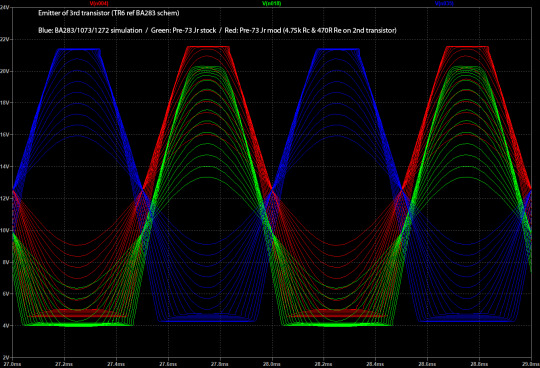
Above is the before/after clipping performance (verified very nicely with an oscilloscope, thanks LTSpice!) compared to the Neve circuit (enlarge). The Neve sim is delayed 500uS to see it more clearly; there’s no phase discrepancy.
Transformers
Input transformer - VTB9045M / Output transformer - VTB1148
Both transformers have primary and secondary wired series as stock. Turns ratio of the input is 1:2 (1.2k > 4.8k, +6dB), output is 1:1.7 (200 > 600 ohms, +4dB).
Added 680R/1W resistor across OT secondary to provide a more "vintage" load and put more current through the transformer. Frequency response is unchanged. Seventh Circle's 1290 'clone' does this, as do many others.
Carnhill 1148 output transformer had to be extensively modified to fit in the enclosure, including removal of its A-frame. It has no roll-off of lows or highs. It has basically zero overshoot with a 10kHz square wave input, and roughly the same amount of ringing as the stock OT. Rise time is a hair faster, probably because the 1148 has 20% lower inductance than the stock OT.
There is no measurable roll off of either highs or lows in the stock output transformer when operated clean. It has about 10% overshoot on a 10kHz square wave with the stock (1073-correct) zobel network -- but very little ringing. Overshoot appears to get worse at higher signal levels, but this seems to originate in the output amp (slew rate limiting), not the transformer itself.
1148 measures differently -- maybe marginally better -- but wasn’t worth the cost or extra work to get it to fit. More specifically, the 1148 sounds a little 'fuller’ in a straight A/B test, but that’s only because it’s a little louder. Once properly loudness-matched, it was indistinguishable in a blind test from the stock OT.
Carnhill 9045M input transformer shows no ringing at all with just a 180pf cap in C4 on the secondary (Neve value), rather than the 1nF of the stock transformer (reportedly to calm down bad behavior around 15kHz). Very clean with minimal overshoot. -2dB at 10Hz, which is probably just output cap loading on the test interface. Tested after the input Z was changed.
Measured a small low end roll-off from the stock input transformer (-3dB @ 20Hz), which went away when using the DI (though the DI starts to roll off at very high gain levels, because the amplifier's input Z goes down). However, that low end roll-off could have been heavier interface output cap loading from the far-too-low input Z (400 ohms w/ phantom resistor error) of the stock circuit -- didn’t know the input Z was so low at the time of the measurement.
9045M is clearly superior to stock input transformer.
Capacitors
Input caps to the input and output amps (1C3 & 4C1) are 22uF in this build, instead of 10uF tantalum as in the 1073. Output caps 1C6 & 1C10 are the correct 22uF value but are electrolytic, vs tantalum in the 1073. Tantalums may add harmonic distortion, especially at high frequencies, but audibility is questionable.
1073 used polystyrene caps for low-value positions; Pre-73 uses polyester. Changed polyester caps to polystyrene (except the 100pf, changed to polypropylene), changed 22uF input caps to 10uF tantalum, changed 22uF output caps to 22uF tantalum. No immediately audible difference, though 5th & 7th harmonic distortion components increased a little.
Ceramic 1n caps on both input and output pins are definitely not in the 1073. These may be a holdover from when the Pre-73 had an ungrounded chassis. They add quite a bit of effective cable capacitance to both input and output. Removed these, no apparent noise penalty or oscillation, even with chassis open.
Power supply
24VAC wall wart puts out 28VAC unloaded, 26.5VAC loaded. Seems fine for the task. Different Pre-73 models shipped with a wide variety of different AC wall warts over time (ranging in output from 0.4-2.0A). GAP's outboard "power supply" is just a toroid with 4x 12VAC/500mA taps on it, in a metal box.
Raw rectified DC input to regulator is 35V. Possible that a 36VDC wall wart would work, but might mess up the phantom supply, which is a voltage multiplier/diode ladder arrangement (seems to produce about 68V unregulated). Phantom voltage might be limited to ~22VDC unregulated, instead of 48V regulated, or might not work at all.
In this case someone unwittingly swapped in a 24V DC supply to get rid of hum. Probably rendered the regulator useless and reduced headroom in addition to compromising the phantom supply.
Main reservoir cap is 1000uF, stock. Output and input amps each have their own decoupling, via 12R-2200uF and 270R-470uF RC networks, respectively. These values are straight out of the 1073 schematic (except that the 1073 uses a 1000uF instead of 2200uF) and shouldn't be changed, but reservoir cap upstream of the regulator I increased to 2200uF/50V and bypassed w/ film to reduce ripple and RFI.
Also added a power LED strapped across the reservoir cap w/ 15k series resistor.
Other
Zen Pro Audio puts a NOS Motorla 3055 in as part of their “full” mod, and changes the couplers to tantalum (like Neve). Motorola 3055s used a planar epitaxial process, unlike earlier RCA parts, and modern OnSemi types are likely indistinguishable.
3055 was not optimally biased, re-biased for symmetrical clipping & maximum headroom. However, note that optimal biasing of the 3055 has the effect of removing most even-order distortion products. Point of maximum headroom does not correspond to point of minimum distortion.
In the original MKI full-size Pre-73s, grounding problems caused buzz and other noise, and the regulator was prone to dying because it was operated marginally. The chassis was ungrounded. The Junior appears to have a power resistor in series with the regulator (a later revision), and the chassis is tied to pin 1 of both input and output jacks. Noise floor is acceptable, so no grounding or supply revisions are necessary.
5 notes
·
View notes
Photo

우왓! 드뎌 왔어 💜 Got my new @wearefocusrite #iTrackOnePre - ready to record some serious stuff on the go 🎸🎤 Let's hit the road 🚌✈️ . . @wearenovation @wearefocusrite #focusrite #micpre (at Seoul, South Korea) https://www.instagram.com/p/B39SghgF1kh/?igshid=sw4eapamwpe3
0 notes
Photo

Warmth @avalondesignusa #micpre #recordingstudio https://www.instagram.com/p/B3h0_GUhx78/?igshid=rqoiq445bmuw
0 notes
Photo
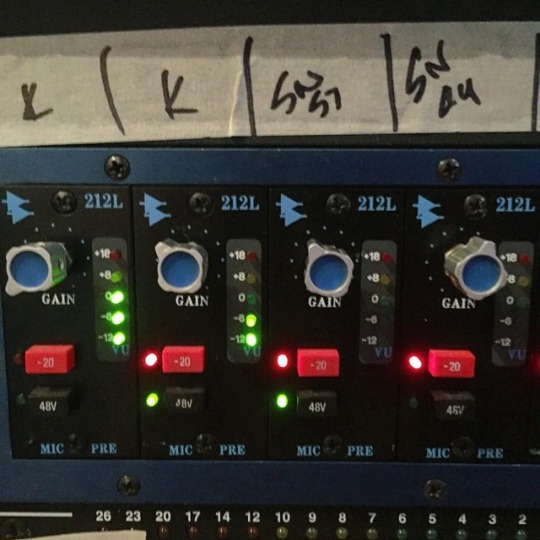
Man, I love API's. So stoked to use the API Legacy at the new space! But for now, some smooth R n' B drums and guitars through these puppies today! #recording #recordingstudio #tracking #api #apiaudio #micpre #drums #guitar #apiaudio #bigbadsound #bigbadsoundla (at Big Bad Sound LA)
2 notes
·
View notes
Photo

Bay #2 has new residents. UA 2108 & Urei 1109. #recording #recordingengineer #recordingstudio #recordingsession #record #recordingstudios #gearybusey #micpre #urei #vanhalen #beachboys #thedoors #billputnam #preamp #preamplifier #micpreamp #microphonepreamp #microphones #microphone #5150 #1984 #fairwarning #womenandchildrenfirst #i #ii https://www.instagram.com/p/Bz3yGwiHk6Z/?igshid=nqecv7q35plf
#2#recording#recordingengineer#recordingstudio#recordingsession#record#recordingstudios#gearybusey#micpre#urei#vanhalen#beachboys#thedoors#billputnam#preamp#preamplifier#micpreamp#microphonepreamp#microphones#microphone#5150#1984#fairwarning#womenandchildrenfirst#i#ii
0 notes